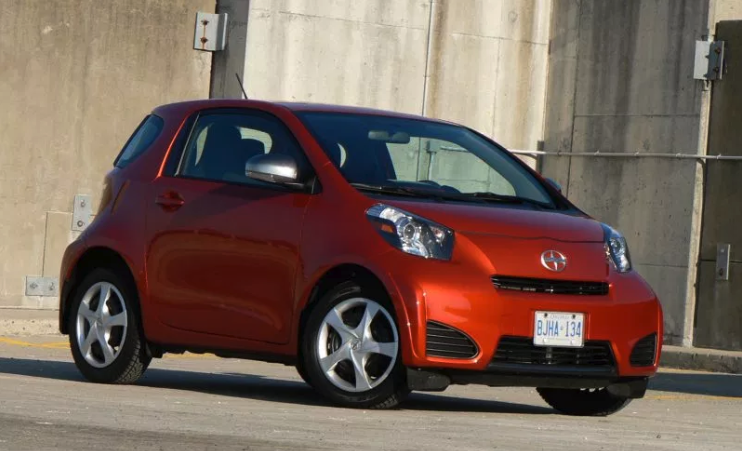Dear John: Sub-$20k city cars

Story and photos by John LeBlanc
More and more Canadians are deciding to live in cities. For those urban drivers, that lifestyle decision includes a heavy diet of congested streets, tight parking spots and stop-and-go traffic. This month’s Dear John letter writer, Mildred Johnston from Vancouver, is facing such an urban driving challenge in trying to decide on her next new car.
In truth, this will be Mildred’s first-ever car. As the 20-something ad agency receptionist has always relied on public transportation or the goodwill of family and friends with cars to get around, she’s looking for a new vehicle that “won’t be too intimidating to drive.”
To be specific, Mildred’s first priority is to own a car that’s easy to park. Her workplace doesn’t provide any parking, so she has to battle each morning to find a parking spot near her downtown Vancouver office. Her drive from her apartment is only about 10 kilometres away from work, but Mildred still “doesn’t want to spend a lot” on gas. As well, with no children and zero need for “active lifestyle stuff, like mountain bikes or kayaks,” Mildred says she can get away with “a two-seater, if I had to.” And as for price, she’s on an under-$20,000 budget.
While most Canadian new car buyers can get away with a “normal” size vehicle — those categorized as “subcompact” and up — city dwellers like Mildred can take advantage of the less-is-more value of so-called city cars — two-door hatchbacks designed primarily for crowded European cities. Three of such cars include the Fiat 500, Scion iQ and Smart ForTwo
The front-wheel-drive 2+2 Fiat 500 is the Papa Bear of this tiny trio. At just over 3.5 metres in length, it’s easier to park in tight spots than a larger subcompact car, but still offers a pair of rear seats. Prices (including freight and pre-delivery inspection fees) start at $17,690 for the 500 Coupe Pop. For that, you get a 1.4-litre four-cylinder gas engine, which makes 101 horsepower and 98 pound-feet of torque, mated to a five-speed manual gearbox.
One look at my next recommendation, Mildred, and you can see how parent Toyota designed its front-wheel-drive 2+2 $18,610 Scion iQ for customers looking for a better Smart ForTwo. While the snub-nosed Scion shares similar proportions with the Smart minicar, the iQ is dimensionally larger, inside and out. Power comes from a 1.6L four-cylinder gas engine making 120 hp and 112 lb.-ft. of torque hooked up to a continuously variable automatic transmission.
There’s good reason congested European city streets are lined with Smart ForTwos: the car is ridiculously small. At just over 2.6 metres in length, in some municipalities, you can park the two-seat ForTwo sideways. The Smart’s efficient packaging is obtained by mounting its 70 hp and 68 lb.-ft. of torque three-cylinder gas engine in the back, sending power to its rear wheels via a five-speed autobox.
While all three of these cars are über city-friendly, I’m going to have to eliminate the Fiat 500 first, Mildred. The Fiat offers the most rear cargo room (its 771 litres is about twice that of the Scion and Smart), and the 500’s pair of rear seats is more accommodating than the occasional squabs in the Scion. But as the longest and least frugal at the pumps (rated at 6.4 litres per 100 kilometres in the city, and 4.9 on the highway) city car here, the 500 gets the boot first.
Super small cars should come with super small prices, and with a base price of $15,695, the Smart ForTwo Pure is the least expensive city car here. With a four-year/80,000 kilometres warranty, the Smart offers 12 more months/20,000 km more than its Fiat and Scion rivals. And with the same 4.7 L/100 km highway rating, the Scion and Smart are also neck-and-neck in city ratings: 5.5 and 5.8, respectively.
However, Mildred, whether driving on highways or downtown streets, the Smart feels a lot less refined than the Scion. Compared to the iQ’s continuously variable transmission, the ForTwo’s sequential autobox (you tap the lever to change gears up or down) remains a sore point. Smooth shifts require playing with the throttle to avoid head-jerking changes, and with a shorter wheelbase and narrower track than the iQ, the ForTwo is less composed on the move.
This leaves us with my recommendation for Mildred’s next new city car: the 2014 Scion iQ. Yes, its $18,610 starting price makes the iQ the most expensive option here, but that’s still within your under-$20,000 budget. Plus, despite being marginally longer and wider, the Scion city car’s turning circle is actually smaller than the Smart. Also, where the ForTwo offers room for two passengers only, Toyota engineers have cleverly reorganized the iQ’s front dash components, carving out more room just ahead of the front passenger. This trick not only delivers an airier experience for those sitting up front but also allows the front passenger seat to slide forward enough to allow the occasional passenger to ride in the back for short distances.
In the end, Mildred, the 2014 Scion iQ is the smart way to go for your next new city car.





![[del.icio.us]](https://www.straight-six.com/wp-content/plugins/bookmarkify/delicious.png)
![[Digg]](https://www.straight-six.com/wp-content/plugins/bookmarkify/digg.png)
![[Facebook]](https://www.straight-six.com/wp-content/plugins/bookmarkify/facebook.png)
![[Google]](https://www.straight-six.com/wp-content/plugins/bookmarkify/google.png)
![[Reddit]](https://www.straight-six.com/wp-content/plugins/bookmarkify/reddit.png)
![[StumbleUpon]](https://www.straight-six.com/wp-content/plugins/bookmarkify/stumbleupon.png)
![[Twitter]](https://www.straight-six.com/wp-content/plugins/bookmarkify/twitter.png)
![[Email]](https://www.straight-six.com/wp-content/plugins/bookmarkify/email.png)